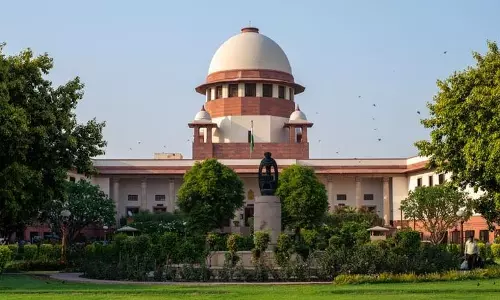

Concerns and protests in the buffer zone
text_fieldsThe state government can be seen to have reacted in two ways to the Supreme Court's order declaring up to one kilometer around protected forests, wildlife sanctuaries, and national parks as ecologically sensitive zones (ESZs). The first of these is the preparation for filing an amendment petition to mitigate the possible implications that could arise in Kerala due to the Supreme Court's judgement. Forest Minister A.K Saseendran had himself clarified the other day that the proposal to amend the petition would include a proposal to exclude residential areas from the ecologically sensitive zones. While the question remains as to whether a complete solution to the problem is possible, the government's move should certainly be seen as a relieving measure. If the state is forced to comply with the order under any circumstances, the move may help to reduce the gravity of the crisis it creates. The second is the government-led Left Front's decision to organise mass agitations in the hilly areas of the state where the court order has caused great concern. The Left Front has called for a hartal in the Idukki district on Friday as part of this decision. A hartal has also been declared in the Wayanad district on Sunday. However, the opposition thinks that there won't be any result from these shortcuts and has demanded convening an all-party meeting to discuss the issue. At the same time, various communities and organisations that are influential in these hilly areas have come forward to express their concern over the apex court's verdict. There are clear signs of the hilly regions turning into a land of protest once again. Along with that, new discussions on the environmental conditions of post-flood Kerala have also been emerging.
The Supreme Court's ruling, which applies to all states, was related to mining inside a wildlife sanctuary in Rajasthan. The ruling would almost completely halt the developmental works in ecologically sensitive zones. Naturally, this will directly affect the small towns situated adjacent to the forest borders and the people living there. Not only construction activities but also other livelihoods including agriculture are likely to come to a standstill. In the case of Kerala, there is an additional concern regarding this. More than 29% of the state's geographical area is covered with forest land. There are 16 wildlife sanctuaries, five national parks and two tiger sanctuaries in the state. Population density is twice the national average. In a nutshell, land is densely populated in the buffer zone as elsewhere. With the Supreme Court judgement coming into force, there will be restrictions on a large part of the land areas and construction works in the 12 districts in the state. Preliminary estimates indicate that the construction works on at least four lakh acres of land will be discontinued. It is also estimated that this will directly affect at least one lakh families. Small towns in Wayanad and Idukki districts are likely to face total eviction. Therefore, the concerns and protests of the people and the government cannot be considered out of place. This is an issue that needs to be taken seriously and put on top of the priorities of the government.
For a number of reasons, ecologically important areas generally come under the ESZs. By controlling the construction and mining in these areas, the objective of the ESZs norm is to create a kind of 'shock absorbers' around the protected areas located adjacent to them. It has already been proven that this has great significance in environmental protection and climate change mitigation. Therefore, in a sense, it is necessary to identify and regulate the ecologically sensitive areas considering the post-flood Kerala. But declaring a densely populated area to be environmentally sensitive suddenly does more harm than good. It will lead to large-scale migration, internal migration, agricultural crisis and stagnation of development. At the same time, some restrictions are necessary. Therefore, an exact and scientific solution between these two must be worked out. The Supreme Court has asked the states to submit a detailed report on the construction works in the buffer zone within three months. The judiciary had made the same demand before as well. It is a serious shortfall that Kerala was not willing to submit a report at that time. The state government had also announced that it would collect data on buildings, farmlands and mining areas in the buffer zone after the 2018 Kerala flood. But that ended up in paper. Had such a buffer zone map been prepared, the government would have had the opportunity to explain the current situation accurately in the court; It would have also been considered as an added factor when applying for relaxation in the judgement. In addition, encroachments and illegal mining in such areas can be detected. Therefore, the government should take immediate steps for buffer zone mapping. That would convince the court more than the hartal commotions.























